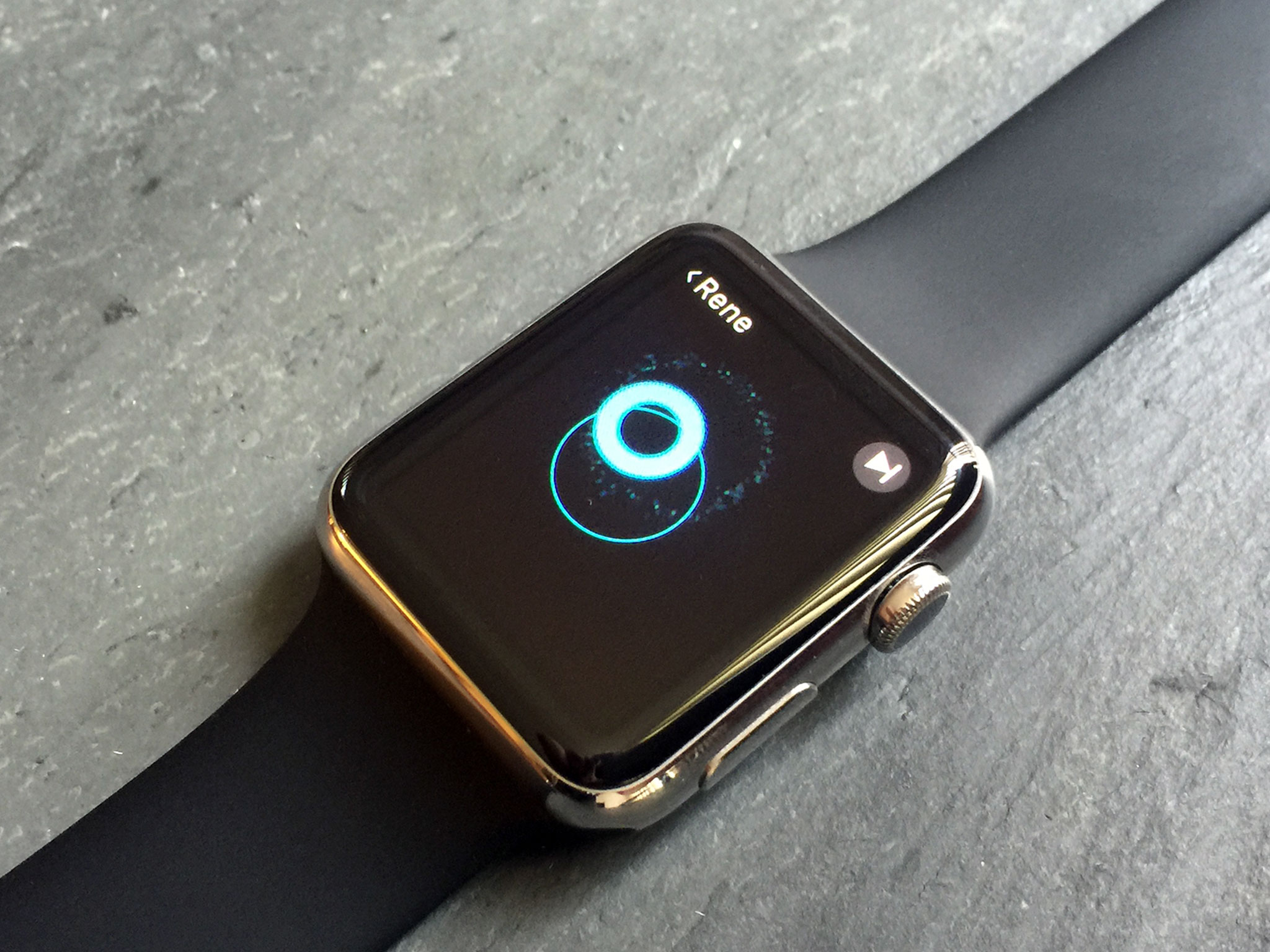On the Apple Watch and Morse code

When I first learned you could transmit taps on the Apple Watch, I immediately started to wonder about its potential as a device for sending Morse code. My grandfather was (and my dad still is) a longtime ham radio operator, and while I never learned Morse to either of their satisfaction, I've always had a fascination with the dots and dashes of years past.
After spending some initial time with it, I'll admit: The Apple Watch isn't a perfect device for communicating in Morse code. The taps you can send are limited to short "dit" buzzes, with no proper way to send the lengthier dash "dah". But I still love the idea of using tap-based communication — and it makes a whole lot more sense to me to try playing with Morse's pre-established taptic language over trying to re-invent the wheel, so to speak.
Why tap at all?
In an age where most people communicate by whipping out a smartphone and sending a text message, it's hard to see the value in a centuries-old communication language. But Morse has advantages when it comes to a more personal device like the Watch: If you can translate the taps on your wrist into language, you don't have to worry about interrupting a meal or conversation to scan text on your wrist.
You'll may have to look to see who sent it, of course, but there's something that feels infinitely more delightful about getting secret messages on your wrist — whether that's an SOS from a friend getting harangued at a party, or hugs and kisses from a loved one.
There's the accessibility angle, as well: it potentially allows the blind, or those with failing eyesight, a way to communicate that doesn't require reading tiny letters on a 1.5-inch screen.
The two-tap "dah" method on the Apple Watch
Since the Watch doesn't offer the ability for a long "dah" tap, I've been experimenting with a quick double-tap in its place — so "A" would be "tap-taptap". I like this option better than my initial tests, which used spaces between the taps as an indication of short and long. (Because you already use spaces to denote different letters and words in Morse, implementing spaces for the taps themselves got confusing, quickly.)
From my experience, tapping letters at the right frequency takes a bit of work to get down consistently — much like learning Morse on a straight key. You also have to take into account the Watch's occasional software lag: If you tap too quickly in succession, the Apple Watch might merge those two presses into one for the receiver.
Master your iPhone in minutes
iMore offers spot-on advice and guidance from our team of experts, with decades of Apple device experience to lean on. Learn more with iMore!
But after you get the initial sequencing down, it can be a lot of fun. I've also found it helpful to visually separate taps — double-tap dahs at the top of the screen, single-tap dits at the bottom. Your recipient can see where you've tapped if they look at their watch, and it helps correct for any tap parsing errors the Watch might run into.
Three Morse code phrases for the Apple Watch
Learning the Morse alphabet is a little challenging if you're starting from scratch. If you want to play around a bit with taptic language but don't want the hassle of learning the entire thing, here are a few tap sequences you can use with your fellow Apple Watch-wearing friends.
SOS
SOS is one of the few publicly well-known Morse patterns, in part due to its simplicity.
S is three short taps: dit-dit-dit, or tap-tap-tap on the Apple Watch O is three long taps: dah dah dah, or taptap taptap taptap
Use this with friends on the Watch to signal boring conversation you want to be rescued from, topics perhaps not best-discussed during a party, or just about anything else.
Hugs and kisses (88)
Heartbeat a little too intimate for your tastes? Let your loved ones know they're in your thoughts with the Morse abbreviation for hugs and kisses, 88.
88: dah dah dah dit-dit dah dah dah dit-dit, or taptap taptap taptap tap-tap taptap taptap taptap tap-tap
Best regards/thinking of you (73)
Morse's 73 is traditionally used as a conversation sign-off, but you can also use this palindromic pattern as a friendlier version of 88.
73: dah dah dit-dit-dit dit-dit-dit dah dah, or taptap taptap tap-tap-tap tap-tap-tap taptap taptap
Does Morse make sense on the Apple Watch?
I'm having fun playing around with Morse code on the Apple Watch, but I know it's not for everyone. If you decide to experiment (or have been experimenting with Morse in different ways), let me know in the comments or on the forum.
Serenity was formerly the Managing Editor at iMore, and now works for Apple. She's been talking, writing about, and tinkering with Apple products since she was old enough to double-click. In her spare time, she sketches, sings, and in her secret superhero life, plays roller derby. Follow her on Twitter @settern.

